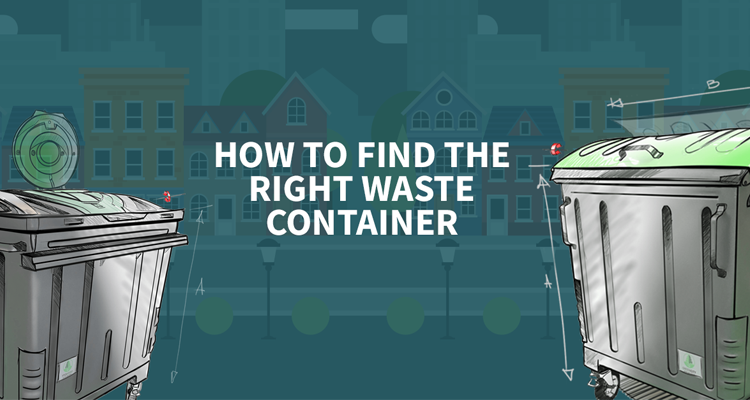Maybe you think disposing waste is enough, while in fact disposing waste in the right container is the goal to strive for. Why does the right waste container size matter so much, and how can you find which one suits your needs best?
If we think of our homes, what we all have at our disposal are relatively small, even tiny, waste bins strategically placed where they are most needed, such as kitchens, toilets, front yards or gardens. Their size is determined by the individual or family needs, hence we can choose whichever size we need out a plethora of options available on the market.
However, when it comes to communal waste disposal in the streets, parks, or residential areas, choosing the right waste bin is not such an easy feat, and is mostly conditioned by the costs. Read on to determine the right waste container size for your business or communal needs.
Small-size communal waste disposal
The regular waste bins you see in the streets are the rule of a thumb when it comes to small size communal waste disposal. They are referred to as either galvanized steel bins or steel litter bins, and, as they are placed in the open, with varying waste type or amount, their quality determines their longevity.
That means that the amount of waste they are filled with is relatively small, and that they are regularly discharged – even several times a day, depending on the frequency of pedestrians.
Most often, they are produced of high quality steel plates, with deep parametric rods and decorative perforations. Additional galvanization protects them from corrosion.
The next time you walk down the street, or visit a park, or go to a bus or train station, or throw a snack wrap or a banana peel at school or at a sports centre, that is where these small-size waste disposal bins are the standard.
Mid-size communal needs
When it comes to communal residential areas, such as residential buildings, choosing the right waste disposal container is of crucial importance. It determines how much money the community is to spend on waste container discharge, and, in the long run, even signals the residents how much waste production is acceptable or not.
That is why there are most often three sizes of these galvanized waste containers. However, what they have in common is they are made of either high quality deep pressed sheet steel or high quality deep pressed sheet steel, and designed to ensure stability and resistant to mechanical stress. They are hot dip galvanized, hence corrosion-proof; easily discharged due to their conical shape; fitted with 2 or 4 handles for safe and easy movement.
Galvanized steel bins from 660 to 770 litres with flat lid, due to their relatively small volume, perfectly fit with the majority of communal residential areas.
However, 1100 litre galvanized wheelie bins with dome lid are the most popular ones, and, in fact, many a company manufacturing waste containers could claim they are their best-selling product.
Furthermore, 1700 litre galvanized steel bins can boast an additional feature of being welded by robots, besides all other previously mentioned characteristics. Their heavy duty metal lid is usually spring assisted, however they are made of light, user-friendly polyethylene. They are particularly well suited for recycling, as their lid offers additional bottle / can or paper apertures. Sometimes, they come with central locking brakes to prevent unauthorised movement, hence are highly vandal resistant.
Big-size communal needs
There is actually not much difference between mid-size and big-size communal waste disposal containers when it comes to their manufacture or numerous features. Their volume, i.e. how much waste they can take, is what they differ in.
Hence, the containers most frequently used for big-size communal needs usually range between 2400 and 3200 litres. Their size does not affect their discharge, as a special side loading refuse collection vehicle is fully equipped to empty them by a single operative. Although they are fire resistant, it is always forbidden tossing open flame in the regular waste disposal containers.
Usually made standard, such waste containers may be further customised, to ensure full compatibility with the communal needs. Hence, a symmetrical wide bilateral lid is an option, or lids with bottle, can or paper apertures, or even pedal opening, as well as accessibility from the front or the rear of the container.
When used in corporate environment, 2400 to 3200 litres waste containers allow for corporate identification and more aesthetics due to being electrostatically powder coated.
Home renovation
Spring or autumn are that time of year when many a families are likely to start their home renovation. With the right waste disposal equipment, nothing is in their way, and no excuses are allowed!
If you opt for skip and roll containers, rest assured that you have got all your waste disposal needs fully covered. These containers are manufactured from high-grade steel sheet and formed with deep pressed reinforcement, and specially designed for stability and mechanical stress resistant.
Due to their significant volume, skip and roll containers are ideal for managing home renovation needs, municipal waste, metal disposal, various packaging materials disposal, as well as commercial and industrial waste.
Communal street cleaning equipment
Regular waste containers may not always be enough to keep the streets clean due to inappropriate positioning of waste containers, or their infrequent discharge. That is why many cities in the world hire waste collectors to work directly on the street, to keep the pathways clean and tidy. To do this job, they need the right street cleaning equipment.
For such needs, we suggest purchasing galvanized outdoor cleaning trolley, as they are perfectly designed for such occasions. They are hot dip galvanised and powder coated; they combine the 80 litres plastic waste bin with a 35 litre plastic lockable toolbox, and are equipped with brush brackets and rubber tyres. What’s more, they are easily manipulated, as their total weight is 40 kilos only!
* * *
Have you got anything to add? Are there any types of waste containers or communal needs we forgot to mention? Feel free to share your ideas, thoughts and comments with us on our social networks: Facebook, Google+ and LinkedIn!


Recent Comments